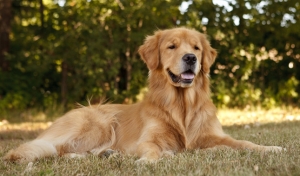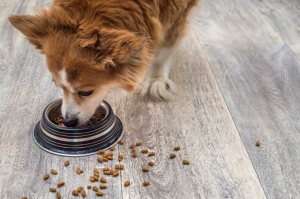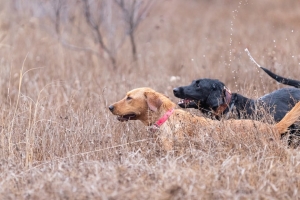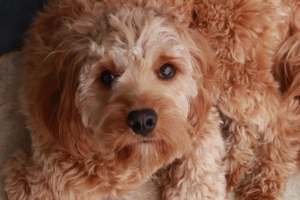Do you have a cute small dog? If yes, beyond all the fun playing times with them, you probably struggle with one thing the most, i.e., finding the right harness. One day it’s too tight, the next, it’s sliding off. Maybe your doggo freezes every time you clip it on, or worse, wriggles out of it mid-walk. It’s frustrating, right? You just want a small dog harness that fits well, keeps them comfy, and doesn’t turn walk time into a battle. That’s exactly what this guide is for.
Whether you have already bought a small dog harness or you are still shopping around, let us walk you through how to get the fit just right. No complicated steps, just real advice from someone who’s been there.
Why Does the Right Small Dog Harness Fit Really Matters?
Here’s the thing: a small dog harness isn’t just about control. It’s about comfort and safety too. A poor fit can rub under their armpits, press into their chest, or even cause breathing issues. And if you’ve ever had your dog slip out of their harness mid-walk, you know just how scary that can be.
You might not even realise the harness is bothering them until they start avoiding walks, pulling more, or chewing at it. That’s usually their way of saying, “Hey, this doesn’t feel right.” So, getting the right fit is worth the effort, not just for you but for your dog’s happiness.
Step-by-Step Process of Finding & Fitting the Right Small Dog Harness
Step 1: Choosing the Right Style for Your Dog
Before we talk about fitting, let’s make sure you’ve got the right type of small dog harness in the first place. Because not every harness works for every pup.
Here are a few options:
- Step-in harnesses: Good for dogs who hate things going over their head.
- Over-the-head harnesses: Usually feel more secure and can be better for strong pullers.
- Vest-style harnesses: Soft, padded, and gentle—great if your dog has sensitive skin.
So if your dog has quirks (and let’s be real, most of them do), take that into account when picking a harness. It’s not one-size-fits-all.
Step 2: Measure, Don’t Guess
Please don’t skip this step. Even if you think you know your dog’s size, take a minute to measure as it can make all the difference. You will need two measurements:
- Neck: Around the base, where a collar would sit.
- Chest: Just behind the front legs, around the widest part of their body.
Use a soft tape measure and make sure it’s snug but not tight. You should be able to slide a finger underneath.
Pro tip: If your dog’s between sizes, always go up. It’s easier to tighten a harness than it is to make a too-small one fit. This one small step saves a lot of back-and-forth returns and saves your dog from wearing something uncomfortable.
Step 3: The First Try: Take It Slow
Alright, you have got the small dog harness. Now comes the part that can either go smoothly… or turn into a wrestling match. If your dog is like most dogs, they will not exactly be thrilled about new gear. So here’s how to make it less stressful:
Let them sniff it first. Toss a treat near it. Make it feel like a normal, low-key thing. Then slowly put it on, talking to them in that gentle “good dog” voice we all do (don’t worry, we all do it). If it’s a step-in style, lure them with a treat so they naturally walk into it. If it goes over their head, do it gently and reward them right after.
You want them to start thinking: Harness = treats = fun walk.
Step 4: Check the Fit Afterwards
So, the harness is on. Now what?
Here’s a quick checklist to make sure the fit is actually right:
- Neck and chest: You should be able to fit one or two fingers between the harness and your dog’s body.
- Straps: They should lie flat, no bunching, twisting, or digging into the skin.
- Leg holes: Your dog should be able to walk without rubbing under their front legs.
- Movement: Watch them walk around. Are they moving freely? Or stopping and scratching at it?
Sometimes, dogs freeze up the first time they wear a harness—not always because it hurts, but because it just feels weird. Give them time. Let them wear it indoors for a bit before going out.
Step 5: Adjust as Needed
Just like we adjust our belts or shoelaces now and then, your dog’s harness will need tweaking too. Especially if they are still growing, gained a little weight, or had a haircut.
Check the fit every couple of weeks. Look out for:
- Red marks or bald spots (could mean rubbing)
- Loose straps that no longer hold
- Your dog resisting walks again
- And always check the clips and stitching. Even a high-quality small dog harness can wear out over time.
Bonus tip: Take a picture of the perfect fit once you have got it. You will thank yourself later.
Avoid Common Small Dog Harness Mistakes
Here are some easy mistakes that a lot of us make without even realising:
- Guessing the size based on breed or weight
- Skipping the adjustments because it “looked fine”
- Pulling the straps too tight, thinking it’ll stop pulling
- Not watching how your dog moves in it
If you catch yourself doing any of these, don’t worry, we have all been there. What matters is that you now know better.
Conclusion
When a small dog harness fits your pet just right, you will feel the difference instantly. Walks become smoother. Your dog stops fussing. You both enjoy the moment more. It might take a little trial and error at first. That’s okay. Every dog is different, and what works for one might not work for another. But getting the fit right is one of the best things you can do for your pup. You’re not just buying a harness. You’re investing in your dog’s comfort and confidence. So take your time, stay patient, and listen to what your dog is telling you. They will show you when it feels right.






